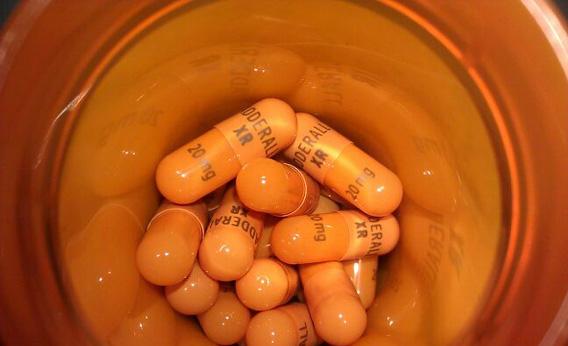How Do I Know I Need Treatment for Stimulant Addiction?
One of the first things the average American does every morning is make coffee. As normal as this may seem, coffee acts in much the same way as an addictive stimulant.
Considering today’s fast-paced world, it’s easy to see how a person might gravitate towards stimulant drugs. Not surprisingly, addiction rates for stronger stimulants, such as cocaine, methamphetamine and prescription-based drugs continue to rise.
Someone who’s abused stimulants on an ongoing basis will likely start to feel the damaging effects of these drugs within a short while. Whether your stimulant of choice is of the prescription drug variety or an illegal substance, signs of stimulant addiction remain the same.
An addiction to stimulants essentially eats away at the brain’s structural integrity, throwing chemical processes completely out of balance. These effects leave addicts in a state of failing health and perpetual mental chaos.
When it comes time to seriously consider getting treatment, signs of stimulant addiction will have taken root within every area of your life. Understanding how stimulants diminish brain function and attack the body can go a long way towards determining whether it’s time to get help.
Stimulant Addictions
Addictive stimulant drugs come in a wide range of forms, some of which include:
- Ritalin
- Concerta
- Dexedrine
- Adderall
- Methamphetamine
- Cocaine
While some may be legal and some not, all types of stimulants carry a high potential for abuse and addiction. Within any given year, as many as two million Americans struggle with some form of stimulant addiction, according to Harvard Health Publications.
Stimulant addictions may start out as a recreational pursuit, popping a pill or snorting a line every now and then. Before long, frequency of drug use increases to the point where it becomes part of the daily routine.
In the process, stimulants have taken over brain chemical processes and weakened the brain’s ability to function on its own. With continued drug use, these effects start to take shape within a person’s daily life, affecting his or her health and ability carry out everyday tasks.
Because of the rate of damage that takes place, stimulant addictions can develop quickly, oftentimes without a person’s even knowing it.
Signs of Stimulant Addiction
Increases in Tolerance Level
The surge in energy and confidence felt when using stimulants results from how these drugs speed up brain and body functions. According to the National Institute on Drug Abuse, each dose of stimulants forces specialized groups of brain cells to secrete norepinephrine and dopamine, both essential neurotransmitter chemicals.
Over time, brain cell structures deteriorate from overwork, which in turn impairs their ability to function normally. As a result, cells lose their sensitivity to stimulant drug effects. Since addicts typically use in order to experience a “high” effect, a person will have to keep increasing his or her dosage level due to weakened brain cell functions.
If you find yourself taking larger and larger doses over time, your brain is developing an increasing tolerance for stimulants. Increases in tolerance levels will continue on indefinitely, for as long as a person keeps using the drug.
Physical Signs of Stimulant Addiction
Physical signs of stimulant addiction become more and more apparent the longer a person keeps using. Once brain tolerance levels reach a certain point, the brain will actually start to require stimulants in order to carry out normal functions throughout the body.

Fatigue is a common sign of stimulant addiction.
If you should choose to decrease your dosage amounts or stop using altogether, withdrawal effects develop in response to the brain’s inability to regulate bodily processes. Withdrawal effects typically take the form of:
- Jitteriness
- Fatigue
- Headaches
- Irritability
- Sweating
- The “shakes” or tremors
In effect, withdrawal becomes part of the overall addiction cycle, driving a person to keep using stimulants in order to avoid the discomfort that comes with withdrawal.
Psychological Signs of Stimulant Addiction
Psychological signs of stimulant addiction show up in a person’s ability to think and function effectively in daily life. According to the University of California-Irvine School of Medicine, the chemical imbalances brought on by stimulant addiction wreak havoc on the brain’s cognitive functions, which tie in directly with the center that processes emotions.
By the time a person becomes addicted, stimulant effects have skewed his or her overall personality make-up. Signs of psychological dysfunction will likely include:
- Muddled thinking processes
- Racing thoughts
- Bouts of depression
- Anxiety episodes
- Inability to concentrate
- Impulse control problems
- Rage
- Violent behavior displays
Lifestyle Indicators
The root of any form of addiction lies in how the mind comes to depend on a drug’s effects to cope with daily life. Likewise, psychological signs of stimulant addiction will show up in the degree of importance a person places on getting and using drugs.
Someone addicted to stimulants will gradually start to organize his or her life around drug use to the point where stimulants take priority over everything else. This inevitably affects a person’s lifestyle.
Lifestyle indicators to watch out for include:
- Neglecting friends and family
- Ongoing relationship conflicts
- Failing health
- Problems at work or school
- Problems with the law
- Money problems
Considerations
After a certain point, the effects from stimulant addiction predispose a person to developing psychological disorders as brain chemical levels skew further and further out of balance. Disorders commonly associated with stimulant addiction include:
- Depression disorders
- Panic disorders
- Bipolar disorder
- Antisocial personality disorder
- Anxiety disorders
Once psychological disorders take root, the addiction problem only grows worse. In effect, one condition feeds off the other with symptoms from one condition aggravating the symptoms of the other.
Before long, drug use increases as a person tries to self-medicate symptoms associated with psychological distress. Likewise, a psychological disorder will only work to intensify drug cravings. Without needed treatment, this condition can escalate to the point where actual psychotic disorders start to take shape.
Ultimately, someone in need of stimulant addiction treatment will see a noticeable and continued decline in his or her overall quality of life. Considering how stimulants can quickly ravage a person’s mental capacity, the sooner a person gets needed treatment help the better.



